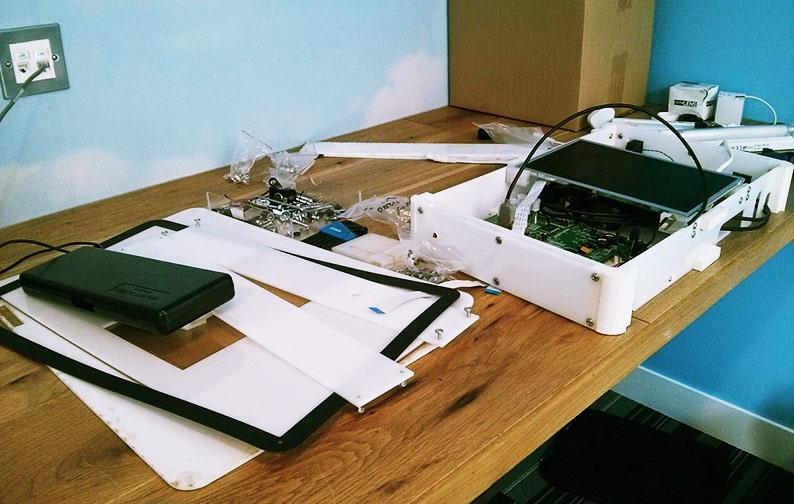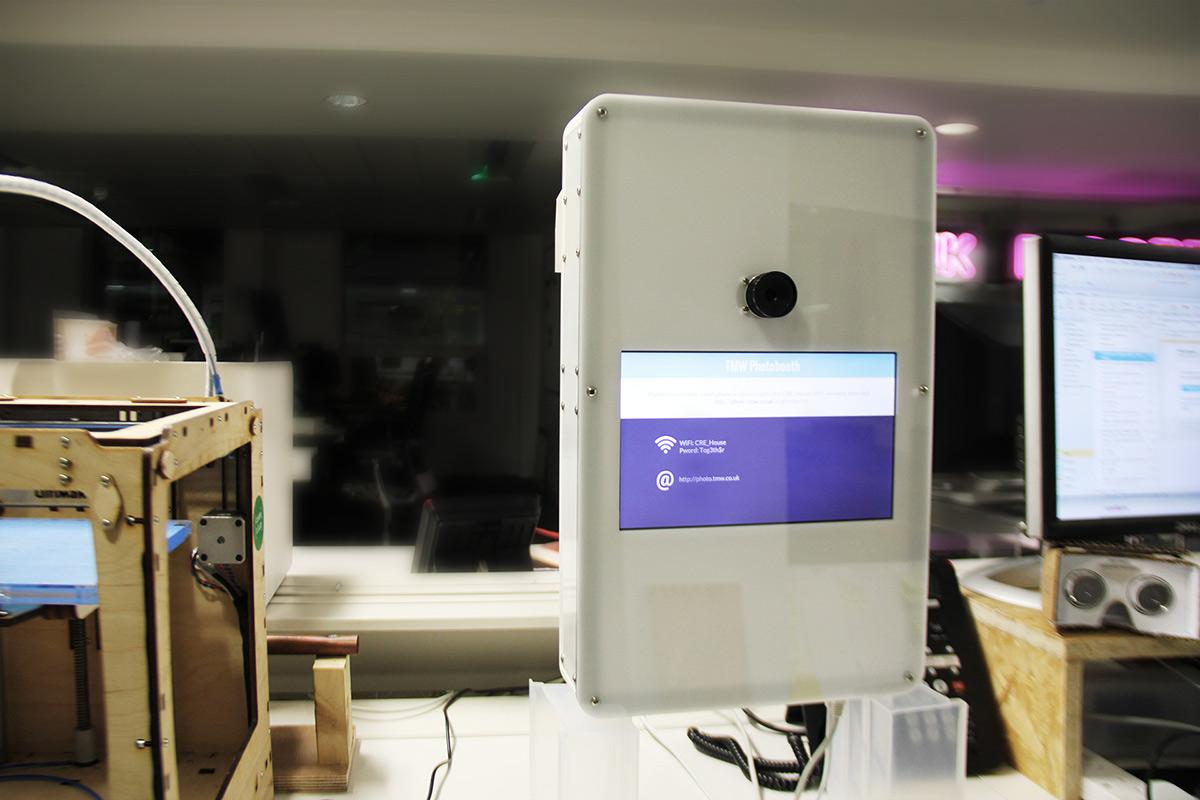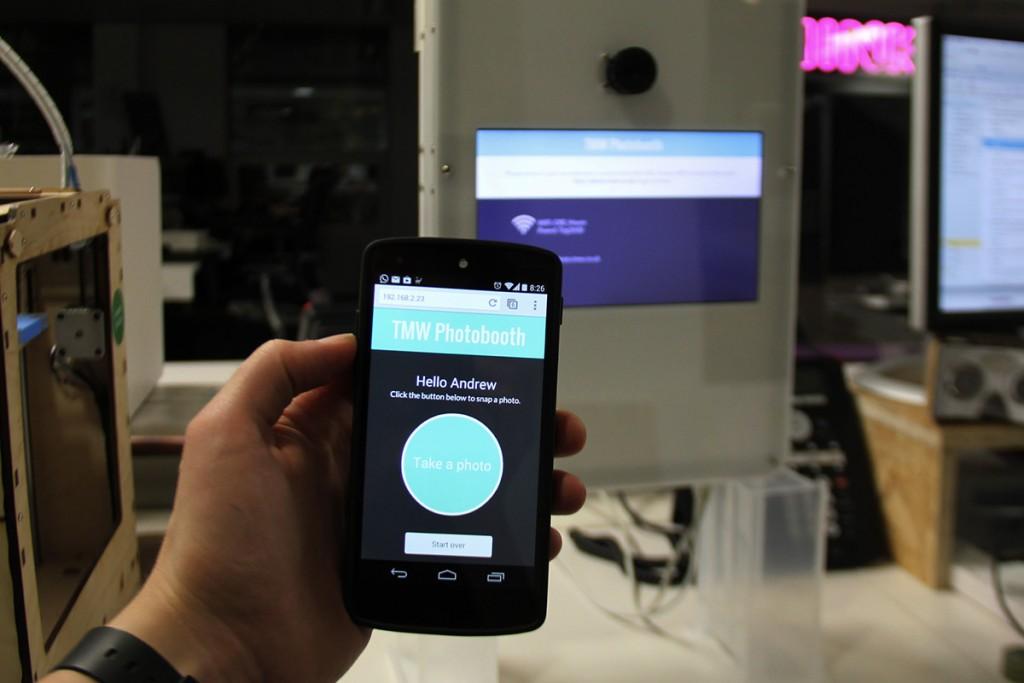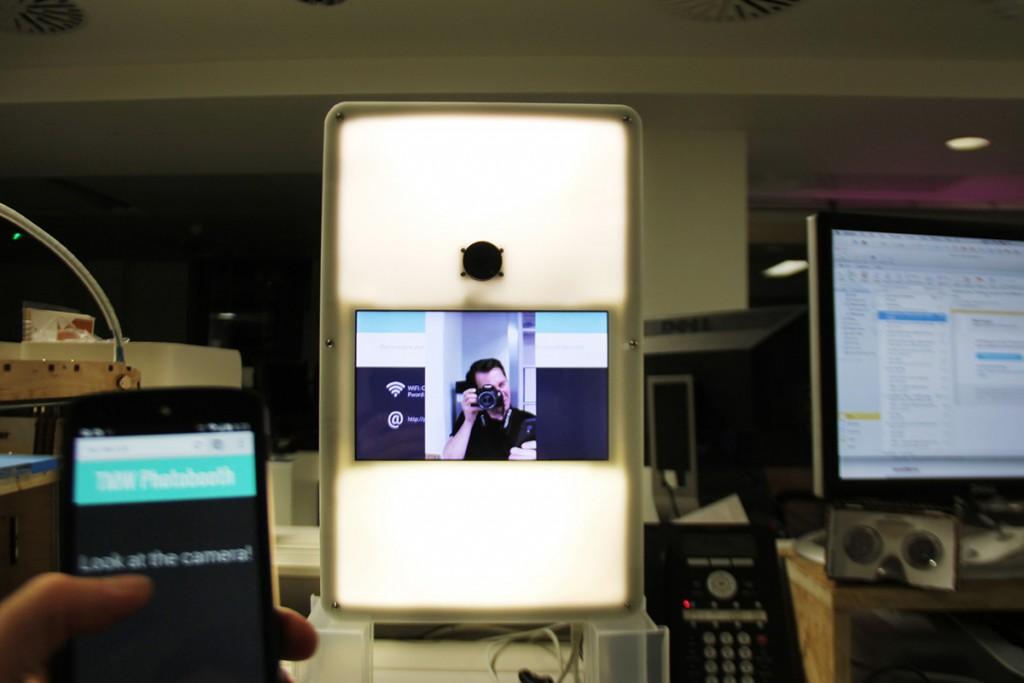Even the more photogenic people among us would surely concur that, when it comes to the mini-portraits that grace various forms of personal identification, they’ve definitely looked better. For most people, ID photos often look very much like grim mugshots. Chances are that, when you begin a new job, you get a photo ID badge or possibly even a biographical blurb on the company website that’s paired with a hastily snapped portrait. Like those driver’s license portraits we all loathe, that requisite photographic portrait stays with you for years on the web and in your wallet or on the lanyard around your neck.
But what if you had the opportunity to be your own photographer and photo editor? What if you could replace an outdated or brutally honest portrait with one more to your liking? London-based design technologist and Renaissance maker Roo Williams has come up with an ingenious alternative to the “stand against the blue screen and look natural” method of capturing an employee’s likeness utilized by far too many HR departments and DMVs across the country.
Williams’ Pi-Booth--a Raspberry Pi-powered photo booth comprised of laser-cut and 3D printed parts–lets employees update their portraits ad lib, which should certainly result not only in better-quality photos but also improved morale. Williams, who studied product design at Central Saint Martins, a constituent college of the University of Arts in London, combined his passion for making and 3D printing with his love of beauty–in this instance, endeavoring to make the employee ID photo more aesthetically appealing.
The Pi-Booth is, in essence, a mobile light box with a camera controlled entirely by a user’s smartphone.
“The device,” explained Williams on his website, “interfaces with the IT system to allow any employee to automatically update their photo at any time.”
The Pi-Booth’s Raspberry Pi runs a Python application. The web server Flask is combined with Flask-SocketIO to provide a web interface and controller that accesses the Raspberry Pi camera. Williams used the Pi’s GPIO (general purpose input/output) pins to control a relay module that is connected to two strip lights and provides the Pi-Booth with a timed flash bulb.
Williams is no stranger to 3D printing either. A Lab Tech at TMW Unlimited in London, a creative marketing agency that uses the latest technology and innovative ideas to connect major brands with consumers, he understands the capacity of 3D printing to facilitate rapid prototyping of products for clients.
His Pi-Booth was produced using state-of-the-art digital manufacturing technologies–flat, laser cut pieces combined with 3D printed parts. He explained how he modified the stock lens from the Raspberry Pi’s camera module, fitting it instead with a 3D printed adaptor, thus creating a way to exchange lenses, giving the Pi-Booth a greater viewing field and providing options for different shooting scenarios.
The smartphone-controlled Pi-Booth lets individual users input their usernames and thereby link the photos they take to their email addresses.
“There is something quite fun about pressing a digital button on a smartphone,” said Williams, “and getting physical feedback in the form of the flash.”
Williams sees other possibilities for the Pi-Booth as well. For instance, he wonders what would happen if one installed a device that interfaces like the Pi-Booth in, say, a store window and passersby could interact with an installation or brand object via their smartphones.
“What could be the mechanic that leads up to that control?” he ponders. “What other devices could we control in this way? Will future generations use smartphones more than they use dials and pushbuttons?”
Such are the compelling questions that have emerged as the Pi-Booth became a reality.
Williams expects to eventually build a similar system that uses different apps. He regards the smartphone as a kind of “democratic remote control” and is constantly thinking about how to capitalize on that in the near future.
Let us know what you think about this fun approach to ID tags in the Pi-Booth forum thread over at 3DPB.com. Check out the video below of the Pi-Booth in use.

Podcast: Play in new window | Download
Subscribe to Our Email Newsletter
Stay up-to-date on all the latest news from the 3D printing industry and receive information and offers from third party vendors.
You May Also Like
Precision at the Microscale: UK Researchers Advance Medical Devices with BMF’s 3D Printing Tech
University of Nottingham researchers are using Boston Micro Fabrication‘s (BMF) 3D printing technology to develop medical devices that improve compatibility with human tissue. Funded by a UK grant, this project...
3D Printing Webinar and Event Roundup: April 21, 2024
It’s another busy week of webinars and events, starting with Hannover Messe in Germany and continuing with Metalcasting Congress, Chinaplas, TechBlick’s Innovation Festival, and more. Stratasys continues its advanced training...
3D Printing Webinar and Event Roundup: March 17, 2024
It’s another busy week of webinars and events, including SALMED 2024 and AM Forum in Berlin. Stratasys continues its in-person training and is offering two webinars, ASTM is holding a...
3D Printed Micro Antenna is 15% Smaller and 6X Lighter
Horizon Microtechnologies has achieved success in creating a high-frequency D-Band horn antenna through micro 3D printing. However, this achievement did not rely solely on 3D printing; it involved a combination...






























